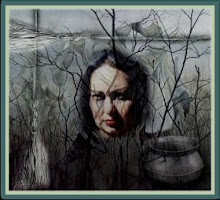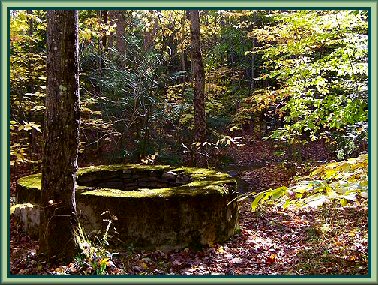
(Mother Holda Image © F. W. Heine)
The Hyldequinde
Thomas Keightly associates the Danish Hyldequind (Elder-Woman) or Hyldemoer (Elder-Mother) with Mother Holle in his book Fairy Mythology and rightly so as there are many well known attributes that these folkloric figures share. There is an etymological connection with the name Holle itself and with the names Hel and Hölle. The connections do not stop there as this much revered and deeply respected Old Dame has tightly woven ties, one might even say threads or strands *g with a variety of other Goddess forms from different cultures. The motif of spinning and weaving installs Mother Holle as a supreme shaper of destiny and of fate.
In Germanic, Scandanavian, and Danish lore she is cognate with Frigg, Hertha (Hlodyn), Hulda, Holla, Berchta, Perchta and others. All of these various epithets denote a single Goddess, a Goddess who has connections with the land, the animals that inhabit it, and the snow, rain and sunshine that fall upon it.
Among the skills that these Goddess forms share is the art of weaving, the Old Girl as she has been called in the British Isles, has been additionally credited with teaching folks how to make linen from flax. The art of weaving and spinning is a primitive form of a method of trance induction that allowed the weaver or spinner to contact the denizens of the Spirit or Under World. The spinning of the wheel is a repetitive motion that when focused upon relaxes the mind from busy mundane chatter and allows one to enter a trance state in order to garner information from those who have passed beyond as well as have contact with resident Gods and Goddesses of the Under World realms.
Winter festivals and celebrations are connected with Mother Hulda, during the twelve days of Christmastide it was expected that all spinning and weaving would cease in honor of this patron Goddess of the Witches although some countries reversed this prohibition and expected that much flax would be spun during that time as Mother Holda would offer as many good years as there were threads on the spindle to the weaver. The weaving would nominally have been completed by the end of the celebratory period and if it was not the Dame offered many bad years as there were threads left on the spindle instead. Mother Hulda also figures prominently in the tides of Misrule that were coterminus with the tides of Christmas. She was Mistress of the Wild Hunt and in early Germanic lore cognate with the wife of Odin.
In fairy tales as recorded by the Brothers Grimm, the figure of Mother Hulda was often a beneficent one, providing protection to women, small children and animals. She often rewarded those who worked diligently and inflicted severe penalties to those who had a more indolent nature. Her gifts were often of gold coins and this also suggests perhaps a deeper alchemical meaning that lies beneath the simple fairy tales shared by candle and firelight as we know it is best to hide secrets out in plain sight for in this manner those who have the eyes to see and the ears to hear will find the deeper meaning underneath the layer of a simple child's tale.
Her abode changes according to which form she has taken, as the Elder Mother, she is said to reside under or inside the Elder Tree, as Perchta, she is said to reside in the bottom of a well. Both are synonomous with the Under World as both are considered portals or entryways into that realm. Folklore accounts often mention a person who has fallen asleep at the foot of an elder and had disturbing yet powerful visions of the Faerie World or the Under World. She is also associated with larger bodies of water, such as lakes and fountains and when in this guise she is said to drive a small wagon around offering the boon of wood chips to those local peasants who might help her repair her wagon when it had broken down. Unlike fairy money, which was said to turn to leaves, ashes and dung by the light of day, these chips would turn to gold for the sagacious members of the peasantry who had the foresight to keep them and not toss them away.
There is much to be explored in the many myths and in the history of our Dame of the Elder, and I hope this small essay may encourage you to seek out more and that by doing so you are able to discover your own connections to her. In essence, I wish for you to find the threads that when followed will lead you back to her spindle or loom and that you find what awaits you there.






2 comments:
Thank you for this fantastic essay!
I didn't know that she resided in the Elder tree, but in retrospect makes a lot of sense.
Certainly more for me to study! ;)
Yes, there are a lot of taboos for working with the Elder without the "Owd Gal's" permission, cradles made from elder made the babies black and blue from pinched and poked etc. I could have written more but just wanted to briefly give some information on her as she is a patron Goddess figure that I work with :)
Post a Comment